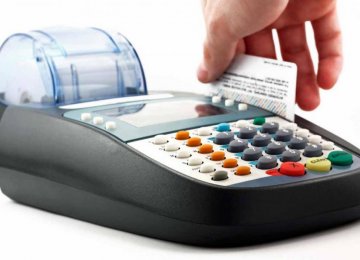Shetab is Iran’s only nationalized ATM card system currently in use. Right now it is not accepted abroad but one day in the not too distant future that could change.
For more on what the national payment method is about the Financial Tribune consulted our in-house banking experts and they explained the system as a national inter-bank payment system roughly abbreviated as the (Interbank Information Transfer Network) or Shetab. The newspaper’s banking buffs said that the system is used between all private and public accredited banks and can be used in many different ways including ATMs, and point-of-sale (POS) terminals in stores and restaurants.
Shetab has been around for over a decade and prior to the unified system, many banks ran internal only cards meaning, you’d have to search out specific branches to access ATMs. Since Shetab came online, all banks must adhere to its strict standards and be able to connect to it.
The system is also beneficial for foreigners living in Iran, who may not have knowledge of Persian and would like to access their cash at ATMs across the country. There is currently in excess of 5 million ATM’s and many more POS terminals in use across the country. The progress of the indigenous system has been to the credit of the engineers behind it who have dealt with sanctions imposed by western countries on the system.
One banking security engineer, who didn’t want to be named, told the Financial Tribune that “if it were not for many back-channel methods, Iran would be struggling to service its ATMs, let alone install new street units.”
The electronic banking expert went on to discuss that many of the standardized electronic systems used internationally are used within Iran, with many of Iran’s top banking security engineers training with the official Cisco Company in destinations across Asia.
Knowing that Iran is using internationally accredited systems, and many ATMs doing more than their foreign counterparts – including paying bills by using a barcode – what if the system overnight connected to international banking systems?
It’s not known what would happen if Iran went “online over night”, but the Tribune could look at a few examples in recent years.
Visa and Mastercard
Bloomberg news reported that previous to 2012 Burma had hardly any ATMs before banking restrictions against that country were dropped.
By October it had moved on leaps and bounds: 2,500 credit- and debit-card machines, known as point-of-sale terminals, and 450 ATMs including at least three at the gates of Yangon’s Shwedagon Pagoda, according to Kanbawza Bank Ltd., known as KBZ, the country’s largest privately owned bank.
Visa and Mastercard entered Myanmar in late 2012, with Mastercard signing up banks in September 2012 licensing at least 7 banks. Roughly 210 ATMs also accept MasterCard for cash withdrawals, with at least 130 of these in the capital Rangoon.
Visa playing the offensive, enlisted 8 banks into their system, with 550 merchants taking their POS systems onboard, they also have 200 ATMs in the city, Bloomberg noted.
China’s UnionPay
If we use the Burma example and look into who else is making headway into the new market, we need to look no further than Chin’s UnionPay system. This system is now in use in 141 countries over the last decade which is now the second largest used system by number.
Bloomberg goes on to say that the remaining 1,665 ATMs in the country accept cards from the Shanghai based card system.
UnionPay stated back in summer 2014 that they would offer the card to Iran as soon as sanctions were removed on the country. This means that some reciprocal papers have been agreed between China and Iran, and if the sanctions do drop against the Islamic Republic then the Chinese card system is likely to gain traction before the American and European competition.
And with Iran’s system being completely up-to-date, but disconnected, it would only take a flick of a switch to move Shetab from internal only to a partner of a system like UnionPay.





